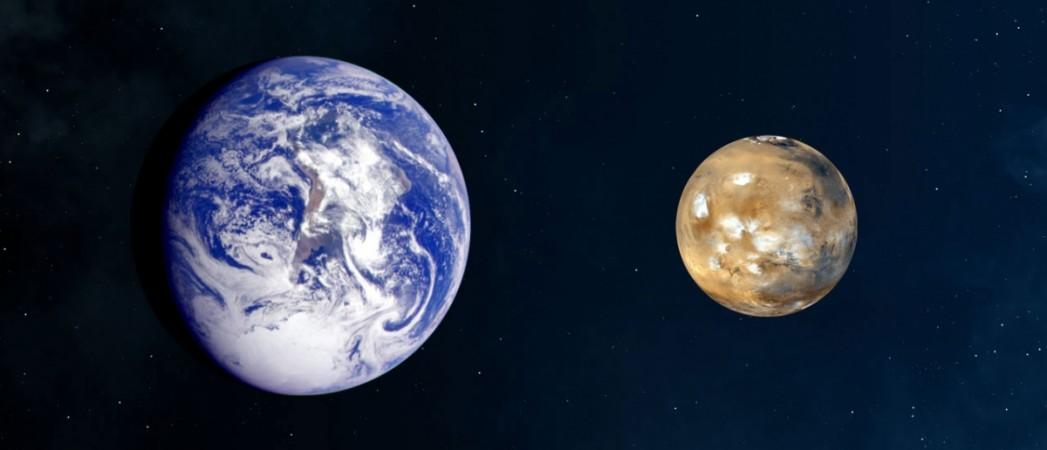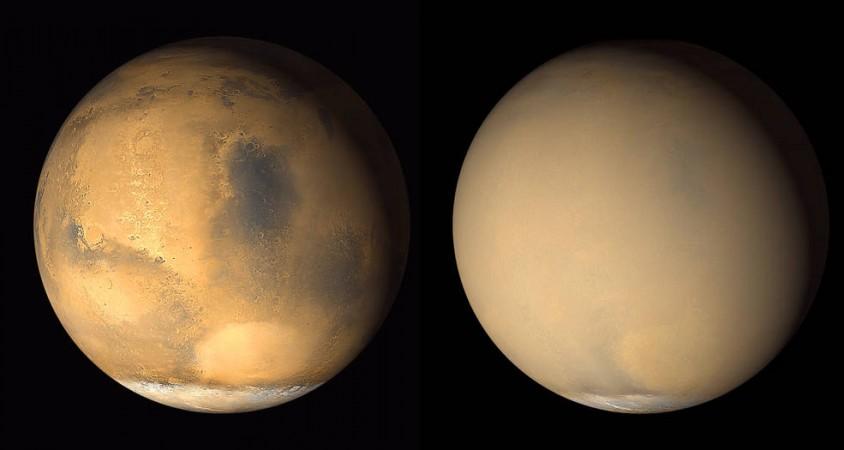
Mars can be seen all through the month, especially for those living in the Northern hemisphere without any special instruments or telescopes.
On a really bright, clear, cloudless sky, for the most part, the brightest objects in the night sky, apart from the Moon are planets. But which is which? For those who are not astronomers or do not have any experience star gazing, identifying every planet in the sky could be more than confusing. Luckily, this month, for the most part Mars can be identified quite easily.
Mars is the bright object right next to the Moon. If you can see the Moon, it is the one near the seven or eight o'clock position of the Moon. It might not seem readily red to the naked eye, but that is the planet. Look towards the south east and it should be right there. It is so big and bright that there is no way to actually miss it, even if you are not actively searching for it.
As to why Mars is seen so brightly in the sky, that is because, explains Space.com, Mars is hurtling toward Earth. It is moving fast as well, about 338,000 km per day. Through July, it will double in brightness, it will be hard to miss in the sky.

By the end of July, Mars will reach its biggest and brightest state. This will not happen for the next 17 years, so take a good look at the planet as it comes ever so close to Earth this month. Mars will be closest to Earth on July 31.
Apart from Mars stealing the show, Venus will also be visible towards the West. Look toward the western horizon for a glimpse at Venus for a really bright object. It will be hard to miss, but one would require a good vantage point above the city lights. Maybe a dark hill would offer a great view of Venus, which will be about as bright as Mars, if not brighter.
July also sets the stage for a rare planetary alignment that is to happen in August where four of the five brightest planets—Mercury, Venus, Mars, Jupiter, and Saturn—will be visible across the sky from west to east.















